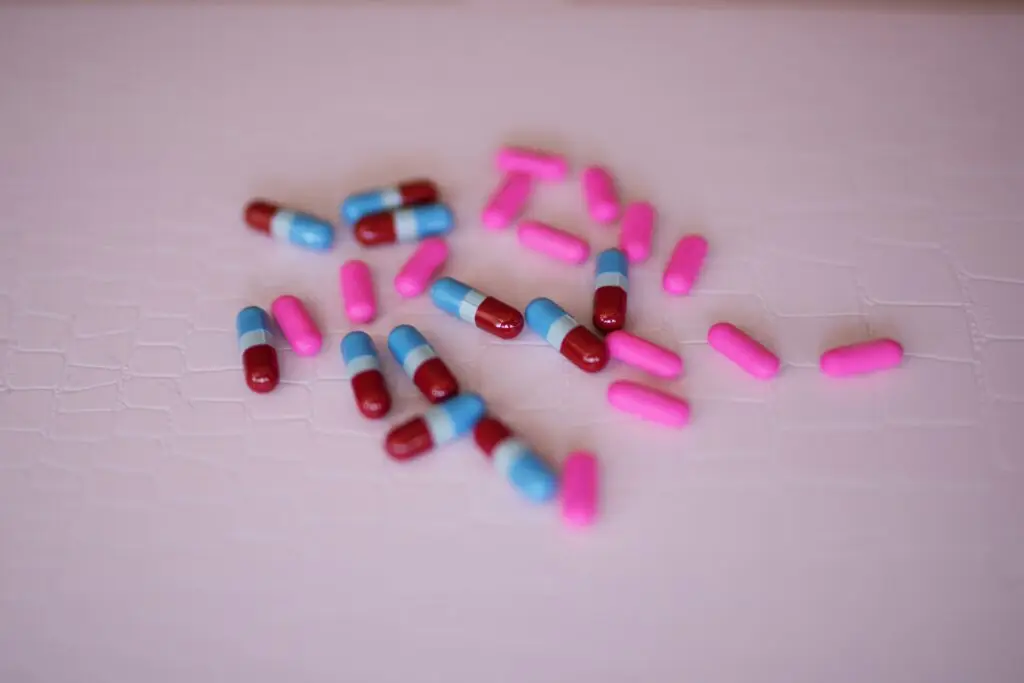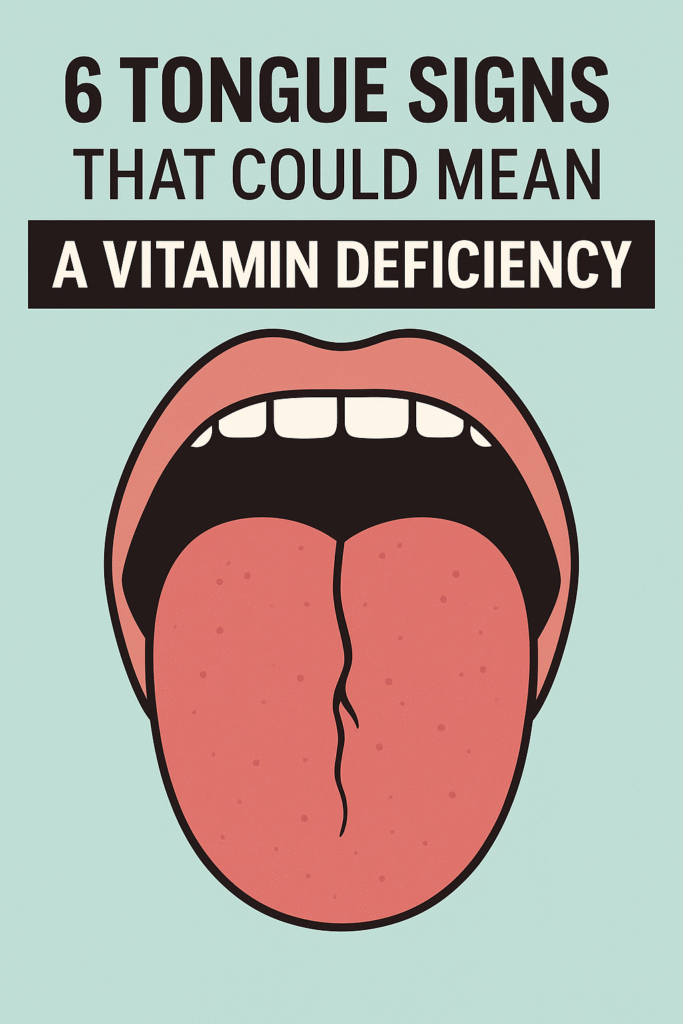⚠️ Affiliate Disclaimer: This post may contain affiliate links, which means I may earn a small commission — at no extra cost to you — if you make a purchase through one of these links. I only recommend products or services I genuinely trust and believe can provide value. Thank you for supporting My Medical Muse!
7 Surprising Reasons Why Your Blood Sugar Spikes After Eating Healthy Foods
You’re eating all the right foods, oatmeal for breakfast, a fruit smoothie at lunch, maybe some whole-grain, pasta or quinoa at dinner, but when you check your blood sugar, it’s higher than expected.
If that sounds familiar, you’re not alone. Many people, even those without diabetes notice unexpected glucose spikes after “healthy” meals. The truth is that healthy doesn’t always mean “blood-sugar friendly.
In this article, we’ll break down why your blood sugar might spike after healthy foods, what’s happening inside your body, and how to stabilize it without giving up nutritious meals.
Understanding Blood Sugar Spikes
Before we get into the reasons behind unexpected spikes, it helps to understand what a blood sugar spike actually is and why it happens.
After every meal, your body breaks down carbohydrates into glucose, the primary fuel your cells use for energy. To make sure that glucose gets where it’s needed, your pancreas releases insulin, a hormone that helps transport glucose from your bloodstream into your cells.
A blood sugar spike occurs when glucose enters your bloodstream faster than insulin can keep up. As a result, your blood sugar rises sharply before your body gradually brings it back down.
Normally, blood sugar should rise modestly after eating and return to baseline within two to three hours. However, when spikes are frequent or large, they can strain your metabolism and trigger a cascade of unwanted effects, such as:
- Energy crashes: Sudden fatigue once blood sugar drops.
- Increased hunger and cravings: Your body’s attempt to rebalance glucose.
- Fat storage and weight gain: Due to repeated insulin surges
- Insulin resistance: When cells become less responsive to insulin over time.
- Higher long-term risk of type 2 diabetes and cardiovascular disease
Here’s the surprising part, these spikes can still occur even when you’re eating “healthy” foods. That’s because everyone’s glucose response is unique, shaped by factors like your metabolism, gut microbiome, stress levels, sleep, and even the order in which you eat your meals.
Understanding how your body reacts is the first step to managing blood sugar effectively and turning “healthy eating” into truly metabolic-friendly nutrition.
1. Healthy Doesn’t Always Mean Low-Glycemic
Many foods marketed as healthy are actually high on the glycemic index (GI) meaning they cause blood sugar to rise quickly.
Examples:
- Oatmeal: Especially instant or flavored types. They’re processed, which breaks down fiber and raises GI.
- Whole wheat bread: Still causes a rapid rise due to fine milling and starch structure.
- Brown rice or quinoa: Healthier than white rice, yes, but still mostly carbs.
- Baked potatoes or sweet potatoes: Nutrient-rich but very high in starch.
Why it happens:
The glycemic index and glycemic load of a food determine how fast and how much your blood sugar rises.
Even “natural” foods can be carb-heavy, so portion size and meal pairing matter more than labels like whole grain or natural.
2. Fruit Sugar Can Be Misleading
Fruit is packed with vitamins, antioxidants and fiber but it also contains fructose and glucose, both of which raise blood sugar.
Some fruits spike glucose faster than others:
- High-spike fruits: Pineapple, mango, watermelon, grapes, bananas
- Moderate: Apples, pears, oranges
- Low: Berries, cherries, kiwi
Why your blood sugar spikes after fruit:
- Lack of protein or fat pairing: Eating fruit alone causes faster absorption.
- Juicing or blending: Smoothies often remove fiber, allowing sugars to hit your bloodstream rapidly.
- Timing: Having fruit on an empty stomach or after a high-carb meal intensifies glucose elevation.
Better approach:
- Pair fruit with nuts, yogurt, or nut butter.
- Choose low-GI fruits and eat them whole.
- Avoid drinking fruit juice, even 100% natural ones.
3. Overestimating the Healthy Carbs
Whole grains, legumes, and starchy vegetables are all nutritious, but for blood sugar control, quantity is as important as quality.
For example:
- 1 cup of cooked quinoa has about 40g of carbs.
- 1 cup of lentils: 35g of carbs.
- 1 medium sweet potato: 27g of carbs.
Even though these foods contain fiber and protein, large servings can still overwhelm insulin, especially if your body has some degree of insulin resistance.
What to do:
- Measure portions (½ cup cooked grains is a good start).
- Balance with non-starchy vegetables and protein.
- Try cold starches (like cooled rice or potatoes) to increase resistant starch, which blunts glucose response.
4. You’re Missing the Blood Sugar Buffer Trio: Protein, Fat & Fiber
The secret to steady glucose lies in macronutrient balance. When you eat carbs alone, your blood sugar spikes fast, but if you add protein, fat, and fiber, digestion slows, allowing glucose to enter the bloodstream gradually.
Example:
- A bowl of oatmeal (alone) causes big spike
- Oatmeal, chia seeds, nut butter and Greek yogurt causes smaller spike
Protein stimulates glucagon-like peptide-1 (GLP-1), which slows digestion and enhances insulin response. Healthy fats delay gastric emptying, and fiber traps glucose in a gel-like matrix, releasing it slowly.
If you frequently eat healthy carb-heavy meals without enough protein or fat, that’s a recipe for glucose swings.
5. Timing and Food Order Matter
Even if you’re eating healthy, the order in which you eat foods can change your blood sugar response dramatically.
Research shows:
- Eating vegetables and protein before carbs can reduce post-meal glucose spikes by up to 40-70%.
- Drinking vinegar (like 1 tablespoon apple cider vinegar in water before meals) can also improve insulin sensitivity temporarily.
Example:
Let’s say your dinner includes chicken, broccoli, and brown rice.
Eat: Broccoli – chicken -rice
Don’t eat: Rice first
This simple trick helps control digestion speed and glucose absorption.
6. You May Have Hidden Insulin Resistance
If you notice that even modest-carb meals cause your glucose to rise sharply, you might have insulin resistance, when cells stop responding well to insulin.
Signs include:
- Normal fasting glucose, but spikes after meals.
- Difficulty losing weight, especially around the belly.
- Fatigue after eating
- Cravings for carbs or sweets.
With insulin resistance, even healthy carbs act like sugar bombs because your cells can’t clear glucose efficiently.
What to do:
- Focus on low-carb, high-protein meals.
- Add strength training, muscles help absorb glucose.
- Prioritize sleep and stress reduction, both of which improve insulin sensitivity.
7. Your Stress or Sleep Levels Might Be Sabotaging You
Your body doesn’t only use diet to regulate blood sugar, hormones play a huge role.
When you’re stressed or sleep-deprived, your body releases cortisol and adrenaline, both of which raise blood sugar to prepare for “fight or flight.” So even if your meal is healthy, stress can cause a disproportionate glucose rise.
Common triggers:
- Skipping breakfast or going too long without food
- Working late, screen exposure before bed
- Emotional stress, deadlines, arguments
- Overtraining or lack of recovery
Fix it:
- Get 7-8 hours of sleep consistently
- Add brief relaxation before meals (deep breathing, walking)
- Avoid eating during stressful moments
8. Hidden Sugars and Sneaky Ingredients in Healthy Foods
Food marketing can be misleading, many healthy foods including protein bars, granola, yogurt, and smoothies, hide added sugars or refined starches that quickly raise glucose.
Watch out for:
- Honey, agave syrup, coconut sugar
- Dried fruit or fruit concentrate
- “Organic cane juice” or malt syrup
- Flavored yogurts or protein powders
Even natural sweeteners like honey or maple syrup spike blood sugar nearly as much as table sugar.
What to do:
- Read labels carefully, aim for less than 6g added sugar per serving.
- Prefer unsweetened versions and add your own sweetness from berries or cinnamon.
9. Individual Glucose Responses Differ
Your body’s response to food isn’t identical to anyone else’s. In fact, studies show huge variability in post-meal glucose among individuals eating the same food.
Example:
In one large study from the Weizmann Institute of Science, two people ate identical foods, one person had a spike, the other didn’t. The reason? Gut microbiome composition, genetics, sleep, and activity all influence how your body handles glucose.
What this means for you:
- Don’t rely solely on generic “healthy food” lists.
- Track your response using a Continuous Glucose Monitor (CGM) or finger-prick meter.
- Notice patterns, which foods consistently cause spikes for you.
This personalized approach is far more effective than one-size-fits-all diets.
10. Lack of Post-Meal Movement
Even the healthiest meal can cause a temporary glucose rise. The problem comes when you stay sedentary afterward.
When you move after eating, even gentle walking your muscles pull glucose out of the blood to use for energy, dramatically reducing spikes.
Proven strategy:
A study in Diabetologia found that just 10-15 minutes of light walking after meals reduced post-meal glucose by 20-30%.
Try this:
- Walk for 10 minutes after each meal.
- If you’re at work, stand or stretch for a few minutes.
- Avoid lying down immediately after eating.
Simple, realistic habits make a big difference.
How to Keep Blood Sugar Stable Even After Healthy Foods
Even healthy meals can send your blood sugar soaring if the balance isn’t right. The good news? With a few small adjustments, you can enjoy nutritious foods and maintain steady glucose levels throughout the day.
Here are the most effective science-backed strategies to keep your blood sugar stable, even after healthy foods.
1. Prioritize Protein
Aim for 25-35 grams of protein per meal from sources like chicken, fish, eggs, tofu, Greek yogurt, or beans.
Protein is your best ally for glucose control, it slows digestion, promotes fullness, and prevents rapid sugar absorption.
Try adding protein to every meal and snack, especially breakfast, to set a stable tone for the day.
2. Choose Smarter Carbs
Not all carbohydrates behave the same. Focus on low-glycemic, high-fiber carbs that digest more slowly, such as:
- Lentils and chickpeas
- Steel-cut oats (not instant)
- Non-starchy vegetables
- Berries instead of tropical fruits
These options cause smaller, steadier rises in blood sugar and keep energy consistent for hours.
3. Always Add Fat & Fiber
Healthy fats and fiber act as natural glucose “buffers.” They slow digestion and help your body absorb carbs gradually.
Add foods like avocado, olive oil, nuts, chia seeds, flaxseeds, and leafy greens to your plate, small additions that make a big metabolic difference.
4. Watch Portions
Even nutrient-rich carbs like brown rice or sweet potatoes can spike glucose if you overeat them.
Use smaller bowls or plates, start with half-cup portions, and adjust based on how your body feels afterward.
5. Eat in the Right Order
Food order matters. Start your meal with vegetables, follow with protein and fat, and save carbs for last.
This approach can reduce post-meal blood sugar spikes by up to 40-70%, according to research.
6. Move After Meals
A short 10-15 minute walk, stretching, or light chores after eating helps muscles absorb glucose from the bloodstream.
Even gentle movement makes a noticeable difference in your glucose curve.
7. Manage Stress and Sleep
Stress hormones like cortisol raise blood sugar levels, even without food. Prioritize 7-8 hours of quality sleep, avoid late-night screens, and try mindfulness or deep breathing to lower daily stress.
8. Track and Personalize
Use a glucose monitor or continuous glucose monitor (CGM) to understand how your body reacts to specific foods.
Everyone’s glucose response is unique, what spikes one person may be stable for another.
Once you know your patterns, you can tailor meals that work with your metabolism, not against it.
Keeping blood sugar steady isn’t about restriction, it’s about strategy.
When you combine protein, smart carbs, healthy fats, and mindful habits, even your favorite “healthy” foods can support stable energy, clear focus, and long-term metabolic health.
The Science Behind Glucose Flexibility
The goal isn’t to avoid all glucose spikes. that’s unrealistic. What really matters is building glucose flexibility, your body’s ability to handle carbs efficiently after eating and switch back to fat-burning between meals. When your metabolism is flexible, your blood sugar rises moderately after food, then quickly returns to normal. You stay energized, crave less sugar, and burn fat more easily, but when it’s inflexible often due to insulin resistance or poor diet, glucose stays elevated longer, fat burning slows down, and energy crashes become frequent.
You can train your metabolism to become more flexible by focusing on a few key habits:
- Build muscle mass: Strength training increases insulin sensitivity and helps your muscles absorb more glucose.
- Support your gut: A diverse gut microbiome from plant-based and fermented foods improves how your body processes carbs.
- Avoid ultra-processed foods: Refined carbs and added sugars overstimulate insulin and damage metabolic balance.
- Protect your mitochondria: These “energy engines” thrive on antioxidants, quality sleep, and regular movement.
- Space your meals: Allowing time between meals (like a 12-hour overnight fast) helps your body shift between glucose and fat burning.
When these systems work well together, your metabolism becomes adaptable, burning glucose when needed and fat when available.
That’s the hallmark of long-term metabolic health and steady, sustainable energy.
Real-Life Example: Two Meals, Two Very Different Glucose Responses
Meal 1: Oatmeal with banana and honey
- 70g carbs, low protein, minimal fat
- Blood sugar spike: 80 mg/dL within 45 minutes
- You feel hungry again 2 hours later.
Meal 2: Oatmeal with chia seeds, Greek yogurt, walnuts, and cinnamon
- 40g carbs, 25g protein, 10g fat
- Blood sugar spike: 25 mg/dL
- Energy stays steady for 4 hours
Same base food, completely different metabolic result.
That’s the power of combining and timing nutrients wisely.
When to Talk to Your Doctor
If you notice frequent or unexplained glucose spikes, even when eating what should be healthy foods, it’s worth checking in with your healthcare provider.
They may evaluate for underlying issues such as:
- Prediabetes or insulin resistance, early signs that your body isn’t managing glucose efficiently.
- Reactive hypoglycemia, when blood sugar drops sharply after an initial spike.
- Hormonal imbalances, including thyroid issues or polycystic ovary syndrome (PCOS), which can both affect how your body processes glucose.
Getting these checked early allows you to identify root causes and make adjustments before complications arise. Remember, catching subtle metabolic changes early is one of the best forms of prevention.
Key Takeaway: Balance, Not Restriction
You don’t need to give up fruits, grains, or sweet potatoes to keep your blood sugar steady.
The secret isn’t elimination, it’s balance, awareness, and personalization.Healthy eating is not just about choosing nutritious foods, it’s about understanding how your body responds to them. Once you learn your body’s unique glucose patterns, you can design meals that nourish and stabilize you not drain your energy.
Final Thoughts
If your blood sugar spikes after eating healthy foods, don’t be discouraged.
It doesn’t mean your body is broken or your diet is a failure.
It simply means you’re receiving valuable feedback, an opportunity to fine-tune your nutrition for better energy, mood, and metabolic resilience.
Here’s a quick recap to keep your glucose steady:
- Some “healthy” foods can still be high in carbs or have a high glycemic index.
- Pair carbs with protein, healthy fats, and fiber to slow digestion.
- Eat in the right order, vegetables first, then protein and fat, then carbs last.
- Manage stress and get enough sleep, since cortisol and poor rest both raise blood sugar.
- Stay active, especially after meals, to help muscles absorb glucose.
- Listen to your body, not just food labels.
Stable blood sugar equals stable energy, mood, and long-term health. Mastering your glucose curve is one of the most powerful ways to optimize your wellbeing and future-proof your metabolism.
👩⚕️ Need Personalized Health Advice?
Get expert guidance tailored to your unique health concerns through MuseCare Consult. Our licensed doctors are here to help you understand your symptoms, medications, and lab results—confidentially and affordably.
👉 Book a MuseCare Consult NowRelated Blog Post You Might Like:
- 7 Clear Reasons Why Your Blood Sugar Is High in the Morning but Normal Later
- 7 Surprising Reasons Why Your Blood Sugar Spikes After Eating Low-Carb Meals
- Can Dehydration Raise Your Blood Pressure? 10 Powerful Reasons Why
- 10 Proven Benefits of Nutritional Counseling for Diabetes Management
- Can Intermittent Fasting Help Type 2 Diabetes? 9 Powerful Facts
- 10 Sneaky Symptoms of Prediabetes in Women Over 40 You Can’t Ignore
- 7 Clear Reasons Why Your Blood Sugar Is High in the Morning but Normal Later


